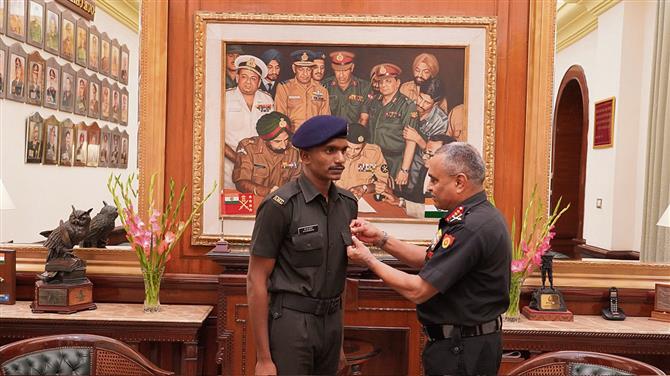
QUITE simply, Manipur defies a resolution to the civil war that has wrecked the state like nothing experienced in the volatile North-East in the recent past. Manipur stands socially and politically polarised with even the ‘buffer zones’, created for administrative expediency between the ‘enemy zones’ dividing the Valley from the hills, perpetually under attack. The state is under siege.
Also Read
Yet, from this mayhem arose voices that stood above the sectarian divide and expressed their anguish on behalf of a whole civil society, like that of retired Lt-General Nishikanta Singh, who on June 15, tweeted, “I’m just an ordinary Indian from Manipur living a retired life. The state is now ‘stateless’. Life and property can be destroyed anytime by anyone just like in Libya, Lebanon, Nigeria, Syria, etc…. Is anyone listening?” Former Army Chief
VP Malik, perceptibly distressed, responded in another tweet, marked to Prime Minister Narendra Modi, Home Minister Amit Shah and Defence Minister Rajnath Singh. He said, “An extraordinary call from a retired Lt Gen from Manipur. Manipur needs urgent attention at highest level.”
From nine-year-old Tia beseeching the PM to put out a “small message or a tweet” to a junior External Affairs Minister at the Centre, Rajkumar Ranjan Singh, wondering, “I don’t know what’s the reason, I am only seeking peace,” the cry for Delhi’s intervention to assuage the anguish and hurt was loud. Singh’s house in Imphal was set on fire by a mob but fortunately, he was not inside. The attack displayed the impunity with which a crowd went for a BJP MP and minister’s home. It was proof that law and order had collapsed since early May, when the largely Vaishnav Hindu Meiteis, who do not belong to a tribe and inhabit the Imphal valley, and the Kuki-Zo tribes from the hills were engaged in a pitched battle. Manipur has a BJP government with N Biren Singh, a Meitei, as the Chief Minister.
It is important to emphasise the ethnicity of the players because that lies at the heart of the conflict. The Meiteis comprise the largest population grouping at 53 per cent, followed by the Tangkhul Naga tribe living to the north of Imphal at 24 per cent and the Kuki-Zo tribes of the hills at 16 per cent. The Meitei Hindus and the Christian Tangkhul Nagas and Kuki-Zo tribes are almost equal in number, at 41.39 per cent and 41.29 per cent, respectively, as per the 2011 Census. In earlier ethnic clashes, religion never played a part, but this time, the Hindu-Christian fault-line constituted another angle of a battle that concerned land, economic alienation and political representation.Advertisement
To recapitulate, the spark was lit on May 3 by a solidarity march organised by the All Tribal Students’ Union Manipur in the hills to protest the direction given to the state government by the high court to submit a recommendation to the Centre on the inclusion of the Meiteis in the ST list. It was a longstanding demand of the community, which was aggrieved by the existing law allowing tribes to buy land in the plains but denying the Meiteis this right in the hills. The march was a red rag for the Meiteis, who marked out the homes and properties of the Kuki-Zo tribes in the plains, burnt them down and assaulted and killed the outnumbered tribals.
Numbers apart, the representation in the legislature is uneven. Out of 60 seats, only 19 are reserved for the tribes, who justifiably feel left out of the power and decision-making structures. The political dominance of the Meiteis gave a fillip to the community in the ongoing strife against the tribes, who lack the same heft. Indeed, CM Singh pandered to his electoral constituency to not only secure his position within the state BJP against factional challenges but also implemented measures such as extending the Forest Act to declare significant areas in the hills as reserved/protected forest and wildlife sanctuary to deny the tribes the use of their natural habitats.
Going by the BJP’s playbook, the Kukis, who share ethnic roots with the Mizos of Mizoram and Chins of Myanmar, were disparaged as ‘foreigners’, ‘illegal immigrants’ and ‘encroachers’, engaged in drug peddling (it’s true that many tribes are involved in poppy cultivation). The Kuki militant groups were blamed for the violence and equated with the Kuki population at large. Undeniably, the conflict was not as one-sided as portrayed by sections because the Meitei settlers in the hills were attacked by the tribes, but the casualties were fewer.Advertisement
Does a state government exist? Yes, but only to foster the BJP’s ‘double-engine sarkar’ slogan that is increasingly looked askance and was rejected by the voters of Himachal Pradesh and Karnataka. But CM Singh continues because the Centre does not want to disturb the ‘double-engine’ equation, although it has stopped chugging and exists only to help the mobs, as the huge haul of weapons ransacked and handed over to local militia and mobs from the state armouries demonstrated. Outside the residence of Imphal East BJP legislator Susindro Meitei hung a poster urging the destructors to deposit their snatched weapons in a drop-box, no questions asked! That was the degree to which the state patronised one section of the attackers.
The Centre’s intriguing silence prompted the belief that either it did not want to intervene or was indifferent to the goings-on. Barring a three-day visit by Shah after the Karnataka electioneering concluded, no Central minister has stepped inside Manipur. The Centre did not initiate steps towards a broader political engagement with the Opposition. Gone was the convention to meet all-party delegations and convene cross-party gatherings. A cynic in the BJP, when asked to explain the Centre’s reticence in contrast to the prompt responses to the Balasore train tragedy or cyclone Biparjoy, replied, “Manipur brings in two Lok Sabha seats, Odisha 21 and Gujarat 26.”








































































